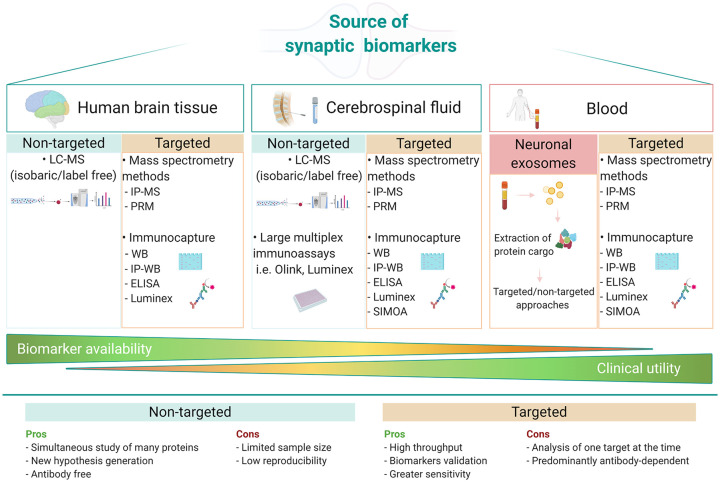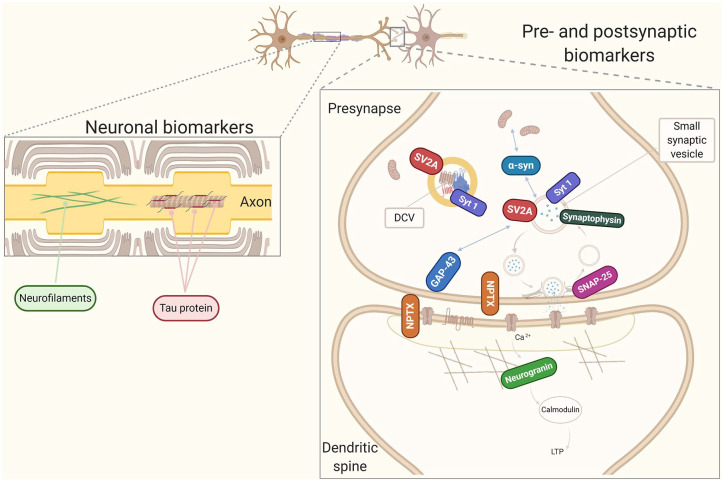Fluid Biomarkers for Synaptic Dysfunction and Loss.
IF 3.4
Q2 MEDICINE, RESEARCH & EXPERIMENTAL
引用次数: 64
Abstract
Synapses are the site for brain communication where information is transmitted between neurons and stored for memory formation. Synaptic degeneration is a global and early pathogenic event in neurodegenerative disorders with reduced levels of pre- and postsynaptic proteins being recognized as a core feature of Alzheimer’s disease (AD) pathophysiology. Together with AD, other neurodegenerative and neurodevelopmental disorders show altered synaptic homeostasis as an important pathogenic event, and due to that, they are commonly referred to as synaptopathies. The exact mechanisms of synapse dysfunction in the different diseases are not well understood and their study would help understanding the pathogenic role of synaptic degeneration, as well as differences and commonalities among them and highlight candidate synaptic biomarkers for specific disorders. The assessment of synaptic proteins in cerebrospinal fluid (CSF), which can reflect synaptic dysfunction in patients with cognitive disorders, is a keen area of interest. Substantial research efforts are now directed toward the investigation of CSF synaptic pathology to improve the diagnosis of neurodegenerative disorders at an early stage as well as to monitor clinical progression. In this review, we will first summarize the pathological events that lead to synapse loss and then discuss the available data on established (eg, neurogranin, SNAP-25, synaptotagmin-1, GAP-43, and α-syn) and emerging (eg, synaptic vesicle glycoprotein 2A and neuronal pentraxins) CSF biomarkers for synapse dysfunction, while highlighting possible utilities, disease specificity, and technical challenges for their detection.



突触功能障碍和丧失的液体生物标志物。
突触是大脑交流的场所,信息在神经元之间传递,并储存以形成记忆。突触变性是神经退行性疾病的全局和早期致病事件,突触前和突触后蛋白水平降低被认为是阿尔茨海默病(AD)病理生理的核心特征。与阿尔茨海默病一样,其他神经退行性和神经发育障碍也表现出突触稳态改变,这是一个重要的致病事件,因此它们通常被称为突触病变。突触功能障碍在不同疾病中的确切机制尚不清楚,他们的研究将有助于了解突触变性的致病作用,以及它们之间的差异和共同点,并突出特定疾病的候选突触生物标志物。脑脊液(CSF)突触蛋白的评估可以反映认知障碍患者的突触功能障碍,是一个感兴趣的领域。目前,大量的研究工作都是针对脑脊液突触病理的研究,以提高早期神经退行性疾病的诊断,并监测临床进展。在这篇综述中,我们将首先总结导致突触丧失的病理事件,然后讨论现有的突触功能障碍脑脊液生物标志物(如神经颗粒蛋白、SNAP-25、synaptotagmin-1、GAP-43和α-syn)和新出现的突触功能障碍脑脊液生物标志物(如突触囊泡糖蛋白2A和神经元戊烷素)的可用数据,同时强调它们检测的可能用途、疾病特异性和技术挑战。
本文章由计算机程序翻译,如有差异,请以英文原文为准。
求助全文
约1分钟内获得全文
求助全文
来源期刊

Biomarker Insights
MEDICINE, RESEARCH & EXPERIMENTAL-
CiteScore
6.00
自引率
0.00%
发文量
26
审稿时长
8 weeks
期刊介绍:
An open access, peer reviewed electronic journal that covers all aspects of biomarker research and clinical applications.
 求助内容:
求助内容: 应助结果提醒方式:
应助结果提醒方式:


